
A low-fat diet focuses on reducing fat intake to improve overall health and manage weight. This guide provides a comprehensive low-fat diet food list PDF, helping you make informed food choices. It includes nutrient-rich options like fruits, vegetables, whole grains, and lean proteins, while minimizing processed and high-fat foods. Perfect for those seeking a balanced and sustainable eating plan, this PDF offers practical tips for grocery shopping and meal planning, ensuring a healthier lifestyle.
What is a Low-Fat Diet?
A low-fat diet is an eating plan that emphasizes reducing the intake of dietary fats, particularly saturated and trans fats, to promote better health and weight management. It focuses on consuming foods naturally low in fat, such as fruits, vegetables, whole grains, and lean proteins, while minimizing processed and high-fat foods. This approach helps reduce calorie intake and supports heart health by lowering cholesterol levels and improving blood lipid profiles. A low-fat diet is not about eliminating fats entirely but rather balancing them with other nutrients. Essential fats, like monounsaturated and polyunsaturated fats, are still included in moderation for their health benefits. This diet is often recommended for weight loss, improving metabolic health, and reducing the risk of chronic diseases like heart disease and diabetes. The low-fat diet food list PDF provides a detailed guide to making informed choices.
Benefits of a Low-Fat Diet
A low-fat diet offers numerous health benefits, including weight management, improved heart health, and reduced risk of chronic diseases. By limiting saturated and trans fats, it helps lower cholesterol levels and improve blood lipid profiles, decreasing the risk of heart disease and stroke. This eating plan also supports better blood sugar control, which can be beneficial for managing diabetes. Additionally, a low-fat diet often promotes a higher intake of fiber-rich foods like fruits, vegetables, and whole grains, which can enhance digestion and overall nutrient absorption. Many people find it easier to maintain a calorie deficit on a low-fat diet, aiding in sustainable weight loss. While it’s important to include some healthy fats for essential functions, a balanced low-fat approach can be an effective way to improve long-term health outcomes. The low-fat diet food list PDF provides a practical guide to implementing this dietary strategy effectively.
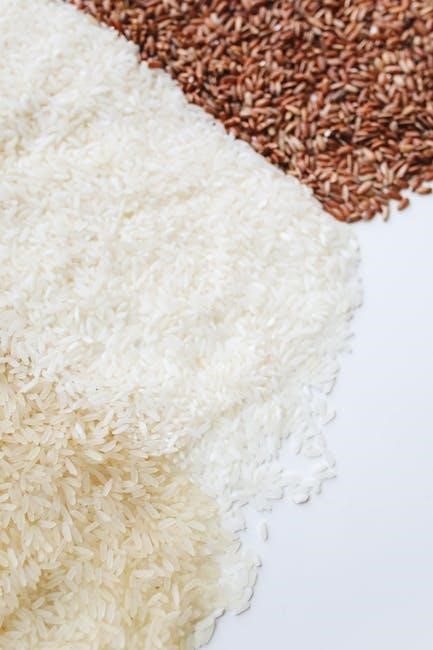
Understanding Fat in Your Diet
Fat is essential for vitamin absorption and brain function but excessive intake can harm health. This guide helps distinguish between harmful and beneficial fats for a balanced diet.
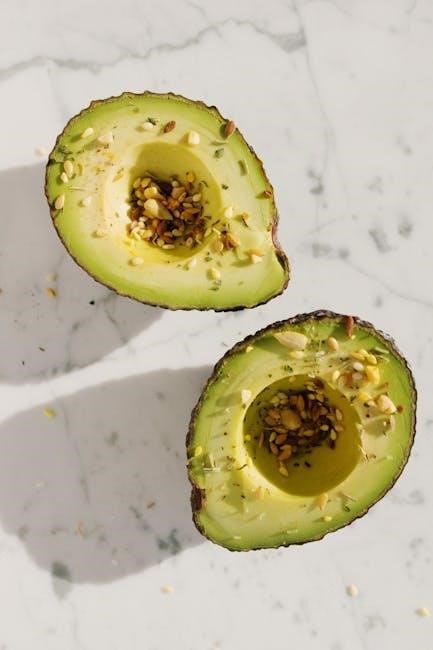
Types of Fats: Saturated, Unsaturated, and Trans Fats
Fats are categorized into saturated, unsaturated, and trans fats, each impacting health differently. Saturated fats, found in animal products and coconut, can raise cholesterol, increasing heart disease risk. Unsaturated fats, including monounsaturated and polyunsaturated, support heart health and are essential for brain function. Trans fats, often in processed foods, are harmful and linked to serious health issues. Balancing these fats is crucial for a healthy diet.
The Role of Fat in Nutrition
Fat is a vital nutrient, providing energy, aiding in vitamin absorption, and supporting brain and nervous system function. It helps maintain cell structure and hormone production, essential for overall health. Consuming the right fats in moderation ensures proper bodily functions without overloading on calories. A balanced intake supports weight management and reduces chronic disease risks, making it a cornerstone of a healthy diet.
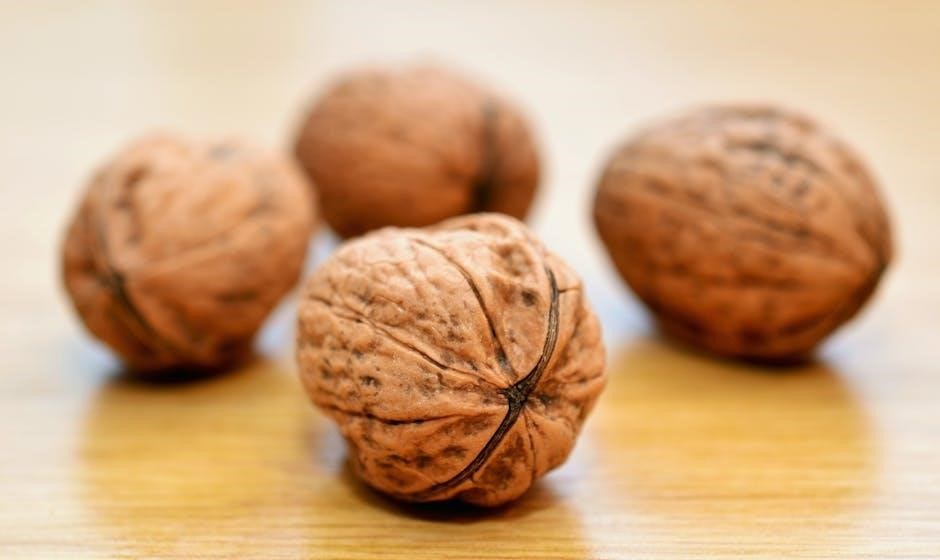
Foods to Include in a Low-Fat Diet
Focus on fruits, vegetables, whole grains, lean proteins, and low-fat dairy. These options are nutrient-dense and align with a balanced, low-fat eating plan for better health.
Fruits and Vegetables
Fruits and vegetables are cornerstone components of a low-fat diet, offering essential vitamins, minerals, and antioxidants. Most are naturally low in fat and high in fiber, making them ideal for promoting satiety and supporting healthy digestion. Incorporating a variety of colorful options like berries, citrus fruits, leafy greens, and cruciferous vegetables ensures a broad spectrum of nutrients. These foods also play a significant role in reducing the risk of chronic diseases, such as heart disease and diabetes, by providing phytochemicals and anti-inflammatory properties. Avocados, while higher in fat, are a healthy exception due to their monounsaturated fat content and can be consumed in moderation. By focusing on fresh, whole options rather than processed varieties, you can maximize the nutritional benefits and maintain a balanced low-fat diet.
Whole Grains and Legumes
Whole grains and legumes are excellent sources of fiber, vitamins, and minerals, making them a cornerstone of a low-fat diet. They are naturally low in fat and rich in complex carbohydrates, which provide sustained energy and support digestive health. Examples include oats, quinoa, brown rice, barley, lentils, black beans, and chickpeas. These foods are also high in plant-based protein, making them a great alternative to fatty meats. Incorporating whole grains and legumes into your meals helps reduce overall fat intake while maintaining nutritional balance. They are versatile and can be used in a variety of dishes, from salads and stir-fries to soups and side dishes. Adding these foods to your diet promotes a feeling of fullness and supports long-term health goals, such as heart health and weight management.
Lean Protein Sources
Lean protein sources are essential for a low-fat diet, providing the body with necessary nutrients without excess fat. These include skinless poultry like chicken and turkey, fish such as cod and tilapia, and plant-based options like beans, lentils, and tofu. Eggs and low-fat dairy products, such as Greek yogurt and cottage cheese, are also excellent choices. These proteins are rich in essential amino acids and help maintain muscle mass while keeping fat intake low. Incorporating lean proteins into meals supports weight management and overall health, making them a vital component of a balanced low-fat diet. They are versatile and can be prepared in various ways to suit different tastes and dietary needs, ensuring a satisfying and nutritious eating plan.

Low-Fat Dairy Products
Low-fat dairy products are a nutritious addition to a low-fat diet, offering essential nutrients like calcium and protein without excessive fat. Options include skim milk, reduced-fat cheeses, and low-fat yogurt. These products support bone health and muscle function while maintaining a balanced diet. They are versatile and can be used in various recipes, ensuring a delicious and healthy eating plan.
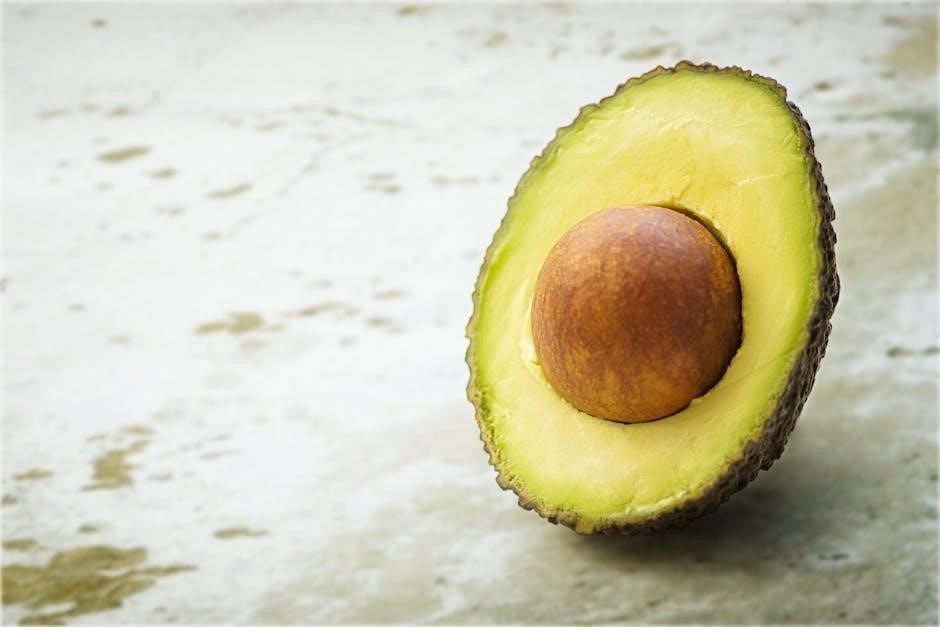
Foods to Avoid on a Low-Fat Diet
High-fat processed foods, fried items, baked goods, and trans fats should be limited. These can hinder weight management and heart health. Always check food labels carefully.
High-Fat Processed Foods
High-fat processed foods are often packed with unhealthy fats, sugars, and additives. Examples include chips, pastries, and pre-packaged snacks. These foods are typically low in essential nutrients but high in calories, making them a hindrance to weight management and overall health. Regular consumption can lead to an increased risk of heart disease and diabetes. When following a low-fat diet, it’s crucial to identify and avoid these items. Always read food labels to check fat content and opt for whole, unprocessed foods instead. By limiting these high-fat processed foods, you can create a more balanced and healthier diet that supports your wellness goals effectively.
Fried Foods and Baked Goods
Fried foods and baked goods are high in fat, particularly saturated and trans fats. Fried foods like fries and doughnuts absorb oil during cooking, significantly increasing calorie and fat content. Baked goods, such as pastries and cookies, often contain butter, lard, or hydrogenated oils, which are high in unhealthy fats. Regular consumption of these foods can lead to weight gain, heart disease, and diabetes. To maintain a low-fat diet, it’s essential to limit or avoid these items. Choose baked or grilled alternatives instead of fried options and opt for homemade baked goods using healthier fats like olive oil or avocado. By making these substitutions, you can reduce your fat intake and improve your overall health while still enjoying delicious meals and snacks.

Sample Meal Plan for a Low-Fat Diet
This meal plan offers balanced, low-fat options to help you stay on track. Breakfast: oatmeal with fruit. Lunch: grilled chicken salad. Snack: yogurt with berries. Dinner: baked fish with steamed veggies. This plan ensures variety and nutrition while keeping fat intake low.
Breakfast Ideas
Start your day with nutrient-rich, low-fat breakfast options. Oatmeal topped with fresh fruit and a drizzle of honey is a hearty choice. Whole-grain cereals with skim milk provide essential fiber and vitamins. Greek yogurt with berries and a sprinkle of chia seeds offers protein and antioxidants. Egg whites scrambled with spinach and tomatoes are a lean and flavorful option. Smoothies made with low-fat milk, spinach, and frozen fruit are quick and satisfying. Avocado toast on whole-grain bread with a poached egg adds healthy fats without overloading on calories. Opt for whole-grain toast with peanut butter or almond butter for a protein-packed start. Avoid processed pastries and sugary cereals, and instead choose these balanced breakfast ideas to fuel your day healthily. Pair with a cup of green tea or black coffee for added benefits. Download our PDF guide for more inspiration!
Lunch and Dinner Options
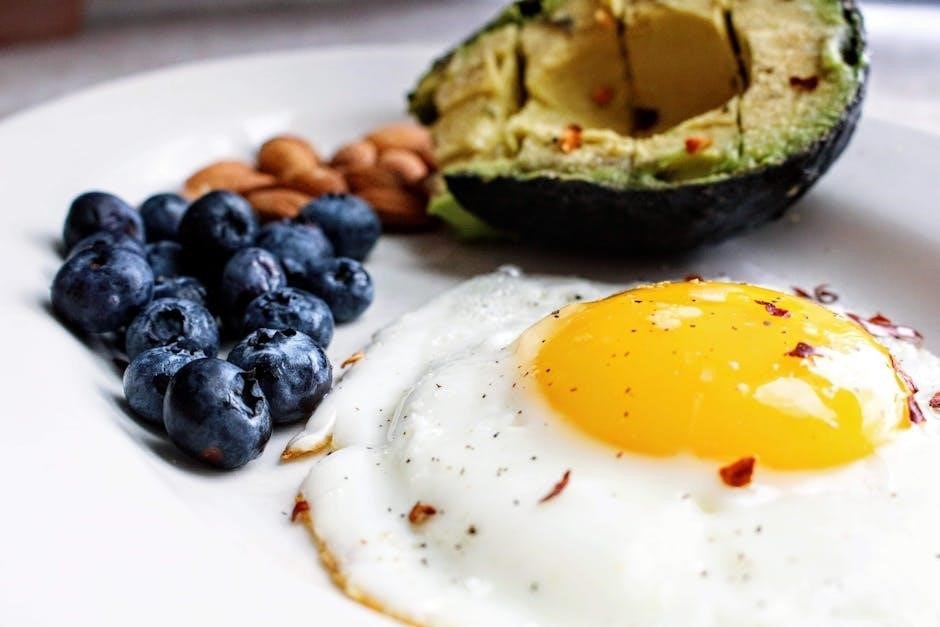
For satisfying and healthy low-fat meals, consider grilled chicken breast or fish paired with roasted vegetables like broccoli, carrots, and Brussels sprouts. Quinoa or brown rice bowls with lean turkey, beans, and mixed greens are nutrient-dense options. Lentil or vegetable-based soups are hearty and low in fat. Opt for baked or steamed dishes instead of fried ones, and season with herbs and spices for flavor. Salads with lean proteins like tofu or chickpeas are excellent choices, but avoid high-fat dressings. Use olive oil sparingly and incorporate lemon juice or balsamic vinegar for dressing. When dining out, choose grilled or poached options and request sauces on the side. Portion control is key to maintaining a balanced meal. Explore these ideas and more in our low-fat diet food list PDF for delicious and healthy inspiration.
Snacks and Desserts
Healthy snacks and desserts are essential for satisfying cravings without derailing your low-fat diet. Opt for fresh fruits like apples, berries, or oranges, which are naturally low in fat and rich in fiber. Baby carrots, celery sticks, or cucumber slices with hummus make great crunchy snacks. Air-popped popcorn (without butter) is another excellent choice. For desserts, try fruit salads, sorbet, or dark chocolate with at least 70% cocoa. Greek yogurt with honey and fresh berries is a delicious and satisfying treat. Avoid processed snacks and sugary desserts, as they are often high in unhealthy fats and calories. Incorporate these ideas into your meal plan using our low-fat diet food list PDF for guilt-free snacking and indulgence.

Grocery Shopping Tips
Plan your shopping with a low-fat diet food list PDF to ensure you select whole, nutrient-dense foods. Always read labels to identify low-fat options and avoid processed items.
Reading Food Labels
Reading food labels is a crucial step in maintaining a low-fat diet. When shopping, check the nutrition facts panel to identify low-fat options. For every 100 calories, a product with 3 grams of fat or less is considered low-fat. Pay attention to the percentage of calories from fat and choose items with 30% or less. Be mindful of added sugars and sodium, which are often found in processed low-fat foods. Look for labels that specify “low-fat” or “reduced-fat” and compare brands to find the healthiest options. Understanding the difference between saturated and unsaturated fats on labels can also help you make better choices. Refer to your low-fat diet food list PDF for guidance on selecting nutrient-dense foods and avoiding unhealthy additives.
Choosing Whole Foods
Choosing whole foods is essential for a successful low-fat diet. Focus on fresh fruits, vegetables, whole grains, and lean proteins, as these are naturally low in fat and rich in nutrients. Avoid processed foods, which often contain hidden fats, sugars, and additives. Whole foods like leafy greens, berries, and whole grain cereals provide essential vitamins, minerals, and fiber while keeping fat content low. Incorporate plant-based proteins such as beans and lentils, which are both nutritious and low in fat. Opting for whole foods ensures you avoid unhealthy ingredients found in many commercial low-fat products. Refer to your low-fat diet food list PDF for a detailed guide on selecting wholesome, nutrient-dense options that support your health goals without compromising on flavor or satisfaction.

Downloadable Low-Fat Food List PDF
A low-fat diet food list PDF provides a convenient guide to planning meals and snacks. It includes 100 healthy, low-fat options to support weight management and heart health.
Benefits of a Printable Food List
A printable low-fat food list PDF offers numerous advantages for those adopting a healthier diet. It provides a clear, organized guide to making informed grocery choices, ensuring meals are both nutritious and satisfying. By having a physical or digital copy, individuals can easily reference the list while shopping, reducing the likelihood of impulse purchases. This tool also helps track daily intake, promoting accountability and consistency in maintaining a low-fat diet. Additionally, it serves as a quick reference for meal planning, saving time and effort. The list highlights 100 healthy, low-fat options, making it easier to incorporate essential nutrients while avoiding high-fat foods. This practical resource supports weight management, heart health, and overall well-being, acting as a cornerstone for a successful low-fat lifestyle.
How to Use the PDF Guide
The low-fat diet food list PDF serves as a convenient and accessible tool for planning and maintaining a healthy diet. Start by reviewing the categorized food lists, which outline approved low-fat options for fruits, vegetables, proteins, and whole grains. Use the guide to create weekly meal plans, ensuring variety and nutrient balance. When grocery shopping, refer to the list to make informed choices, avoiding high-fat processed foods. The PDF also includes practical tips for portion control and mindful eating. Print the guide for easy reference or save it digitally for on-the-go access. By following the structured recommendations, you can simplify your journey toward a low-fat lifestyle, making healthier choices effortlessly. This resource is designed to empower you with clarity and confidence in achieving your dietary goals.